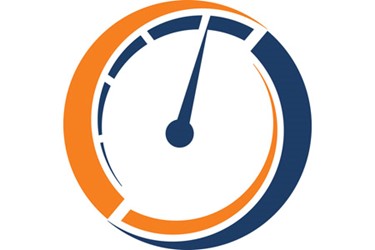6 Months To Serialization: A Review And Projection

By Louis Garguilo, , Chief Editor, Outsourced Pharma Follow Me On Twitter @Louis_Garguilo

The end of May started the six-month countdown to implementation of item-level (unit-of-sale) serialization for all drugs sold in the United States.
No bells rang in the milestone. It does, though, seem a good time – “good” depending on your state of readiness – to assess our progress. For that I’ve again turned to someone tasked with implementing serialization solutions for the biopharma industry to provide an update, and forecast where we’ll be when the calendar turns to January 2019.
The Guidance, And An Extension
 First, let’s again trace our lengthy journey from the official start at the FDA:
First, let’s again trace our lengthy journey from the official start at the FDA:
“The Drug Quality and Security Act (DQSA), was enacted by Congress on November 27, 2013. Title II of DQSA, the Drug Supply Chain Security Act (DSCSA), outlines steps to build an electronic, interoperable system to identify and trace certain prescription drugs as they are distributed in the United States. This will enhance FDA’s ability to help protect consumers from exposure to drugs that may be counterfeit, stolen, contaminated, or otherwise harmful. The system will also improve detection and removal of potentially dangerous drugs from the drug supply chain to protect U.S. consumers.”
In effect, a “product identifier” was to be affixed to drug product sold in the U.S. by November of 2017. However, and we’ll go over this in detail in a moment, the FDA felt compelled to give the industry an extension:
“On June 30, 2017, FDA issued a draft guidance for industry, Product Identifier Requirements Under the Drug Supply Chain Security Act – Compliance Policy. This guidance informs manufacturers and other supply chain stakeholders that although manufacturers are to begin including a product identifier on prescription drug packages and cases on November 27, 2017, the FDA is delaying enforcement of those requirements until November 2018 to provide manufacturers additional time and avoid supply disruptions.”
Some saw the extension coming. Back in September of 2016, I spoke to members of the external serialization-software and -hardware companies, partners, consultants, and integrators assisting biopharma and packaging companies get up to speed. That led to an article titled, Riding With The Drug "Serializers”, in which I wrote:
“… these serialization partners are hired to help devise corporate strategies, implement software and hardware, and ensure individual packaging lines at both internal and packaging partners comply with new track-and-trace regulations set forth by the FDA, CFDA, EMA, and all other agencies ... Few drug makers – or packaging service providers – will achieve timely serialization compliance without outside assistance.”
In that article, we featured a prescient Carlos Machado, who had just been hired as the director of serialization at Sea Vision S.r.l. He sensed a delay was in the works:
“The first telling sign may be in Q2 of 2017,” he said back in September 2016. “I don’t think there are enough resources supporting companies or within the Pharma companies themselves to collectively handle the workload that will still be out there.” Machado thought it a “real possibility” the FDA could offer some sort of extension.
As we know now, he was spot on.
The Delay In More Detail
I caught up with a busy Machado to check back with him on why that extension came to be, and more importantly, where the industry stands with time ticking to the new deadline.
Regarding the year-long extension (the length of which Machado also predicted), he believes the FDA recognized that solution providers were finding it difficult to scale up to service the number of production lines required by the various pharmaceutical companies.
Most of the serialization service providers started out with fewer than 100 employees. They suddenly needed to add hundreds more in a short timeframe to meet demand.
“There’s just a certain amount of subject matter experts,” says Machado. ‘Serialization is not something you go to school for; it’s a subset of something else. It takes a certain skill set to grasp what needs to be implemented across multiple disciplines, including supply chain, engineering, regulatory, project management and marketing.”
At the same time, biopharma companies themselves were having their own internal issues at their various manufacturing locations, with getting everyone up to speed on FDA requirements and aligning product SKUs. They were working intently, but still a source of their own bottlenecks.
Furthermore, the OEMs producing the equipment needed for serialization couldn’t keep up. “You can’t just knock these machines off like Toyotas from an assembly line,” says Machado. “The serialization equipment in normal lead time is from six to nine months. We started to see the OEMs running into nine to 18 months. If you have a company that needs five new case-packers, four new palletizers, and half-dozen cartoners – and you times that by 100 different pharmaceutical companies – those OEMs are squeezed tight.”
A Grand Underestimation?
That’s all understandable. However, the question still had to be asked: “Did the industry as a whole in fact simply underestimate the task at hand?”
“Listen,” Machado replies with an elevated note of seriousness, “the larger pharma companies have been doing this since 2008.” He adds: “Many companies go back as far as 2005 for their first efforts – some 13 years ago. These large corporations who have 50 to 250 lines have been consistently implementing serialization.”
So it appears it’s been mostly at the smaller companies where the size of the efforts were misjudged – and the costs associated purposely put off until the last possible second. These smaller companies that dot our industry today don’t have the Capex available to a larger pharmaceutical company. They weren’t going to implement this first stage of serialization until they absolutely had to. The extension, perhaps, even sent the wrong message.
Nonetheless, it appears the need for that extension became clear after a number of Big Pharma wrote to the FDA, indicating they were working in good faith and making progress, but still facing challenges making the deadline. And if they were having issues, so must the smaller players. The FDA subsequently agreed a delay was warranted – and necessary to prevent drug-market havoc in the U.S.
Still An Open Package
So six months into that extension and six months to go, the estimates are flying as to where we stand currently. “No one can put a definitive number on the percentage of lines that are not completed yet,” says Machado. “I hear five percent. Some have said as high as 20 percent. If it’s 20 percent, that would be shocking to me. Five percent could be 500 lines. But if there’s 2,000 lines that need to be serialized, then that’s a real problem. I’d say it is more like the five percent, but even 500 lines across the United States is a lot of lines left.”
Moreover, everyone in the industry needs to remain cognizant of the fact that this November deadline is specific to “item-level” serialization, meaning the specific unit of sale, for example a single carton. But there’s a whole second phase and higher level, which the FDA wants completed by 2023: The full “aggregation” of product throughout the supply chain.
We’ll unpack that in our next article.
